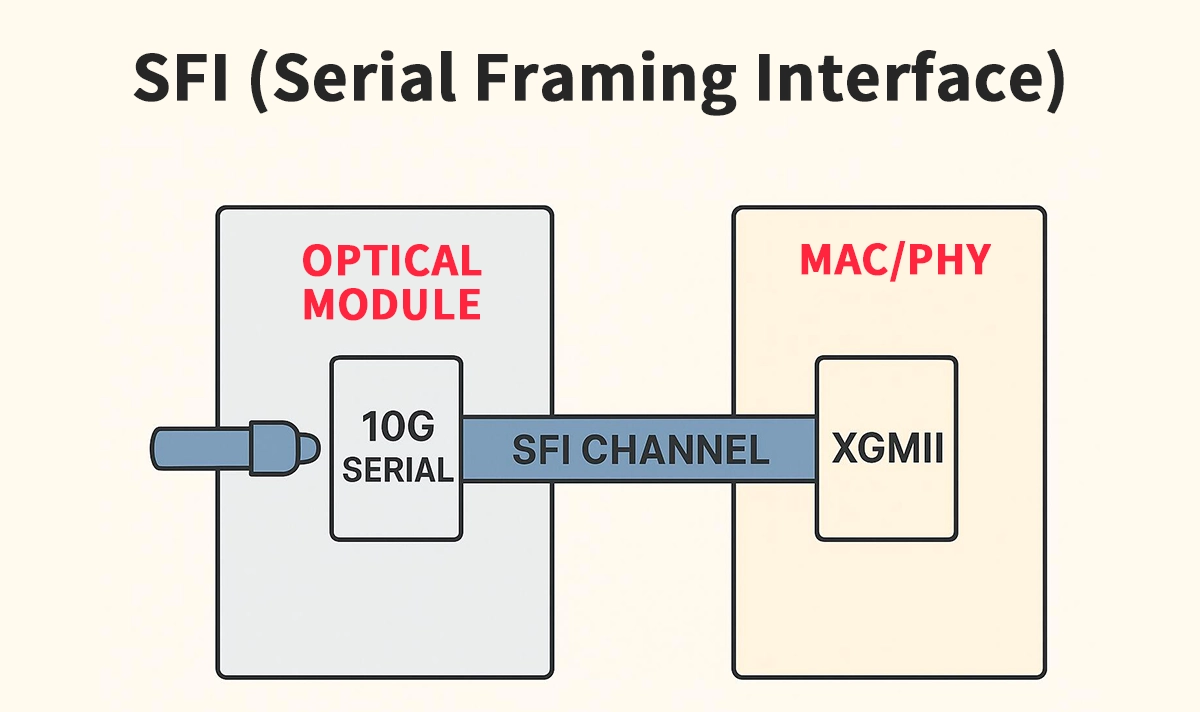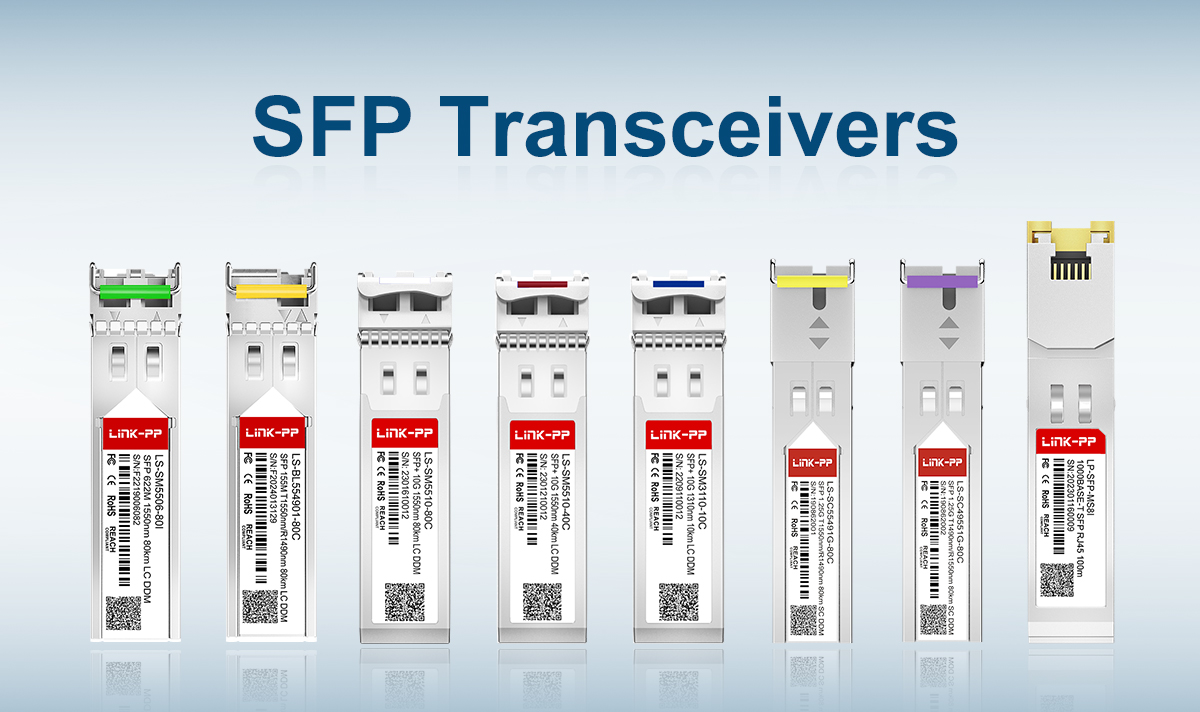
1️⃣ What is SFI?
SFI, or Serial Framing Interface, is a key serial interface standard used in 10G SFP+ transceivers to connect optical modules with MAC/PHY devices or internal chip logic, such as XGMII. It defines the data transmission method, timing, electrical characteristics, and signal amplitude, ensuring reliable high-speed data transfer over optical links.
2️⃣ SFI and Optical Module Lanes
Inside a 10GBASE optical module, data is often transmitted through single 10 Gbps or multiple 2.5 Gbps lanes. Each SFI channel (lane) represents an independent serial data path:
In single-lane 10G SFP+ modules, the SFI channel carries the full 10 Gbps data.
In multi-lane modules, such as 40G QSFP+ transceivers with 4×10G lanes, each lane has its own SFI interface to transmit data in parallel.
This lane-based design allows high-bandwidth optical modules to scale efficiently for data center and enterprise networking applications.

3️⃣ Key Functions of SFI
Clock and Data Synchronization: SFI defines the relationship between clock and data for serial transmission, commonly using 8b/10b or 64b/66b encoding.
Data Integrity and Framing: SFI packages XGMII signals into serial lanes, ensuring accurate data delivery across optical fibers.
Module and Chip Interoperability: By following the SFI standard, optical modules and switching chips from different vendors can interoperate, providing a consistent electrical and signaling interface.
4️⃣ Summary
An SFI channel is a high-speed serial path within a SFP+ 10G Transceiver or chip interface, designed to carry 10 Gbps data and convert between XGMII and serial optical signals. In higher-bandwidth modules like 40G QSFP+, multiple SFI channels operate in parallel, supporting aggregated data rates for advanced networking applications.
5️⃣ FAQ – SFI Interface and Optical Module Channels
Q1: What is the SFI (Serial Framing Interface)?
A: SFI is a serial interface standard that connects 10G SFP+ optical Tranceivers to MAC/PHY devices or internal chip logic like XGMII. It defines data transmission, timing, electrical characteristics, and signal encoding to ensure reliable high-speed data transfer.
Q2: How does SFI relate to optical module lanes?
A: Each SFI channel (lane) represents a single high-speed serial data path within the optical module. Single-lane 10G modules carry 10 Gbps on one SFI channel, while multi-lane modules, such as 40G QSFP+, use multiple SFI channels to transmit parallel data streams.
Q3: What data encoding does SFI use?
A: SFI typically uses 8b/10b or 64b/66b encoding, which ensures proper clock and data synchronization and maintains data integrity during optical transmission.
Q4: Why is SFI important for module and chip interoperability?
A: By adhering to the SFI standard, optical modules and switching chips from different vendors can interoperate. This standardization guarantees consistent electrical characteristics and signal timing, enabling seamless integration in networking systems.
Q5: Can SFI channels support higher bandwidth modules beyond 10G?
A: Yes. In 40G QSFP+ or higher bandwidth modules, multiple SFI channels operate in parallel, each carrying 10 Gbps, to aggregate bandwidth and support high-speed data center networks.
Q6: How does SFI relate to XGMII?
A: SFI converts XGMII signals from the MAC/PHY into serial optical data for transmission. This ensures a smooth transition from parallel electrical signals to high-speed serial optical lanes.
Q7: Are SFI interfaces only used in SFP+ modules?
A: While 10G SFP+ modules are the most common, SFI interfaces are also used in QSFP+ modules and other high-speed optical modules where standardized serial lanes are required for interoperability and performance.


